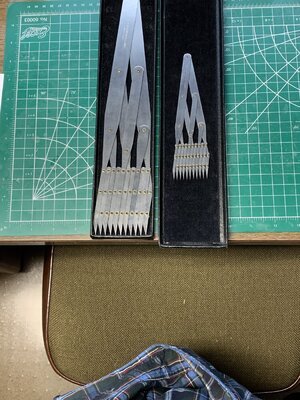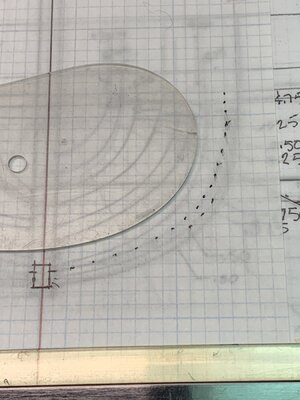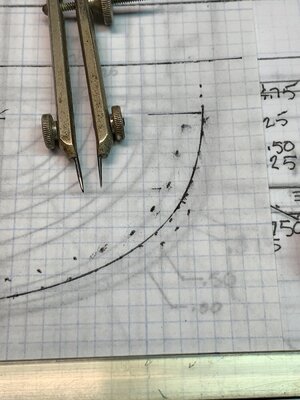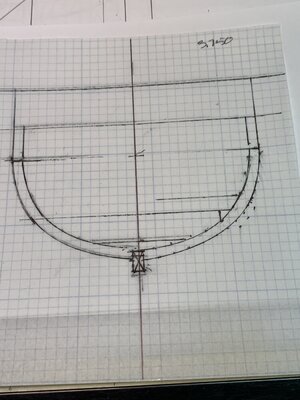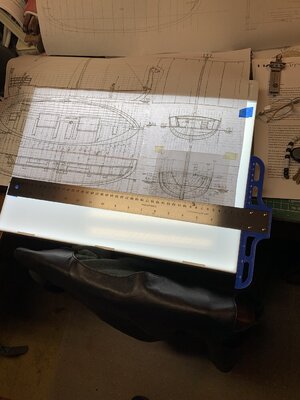Becoming impatient with lack of progress. . . into the garage with 34 degs inside additional new snow coming down to add to last night's deposition I proceeded to restart drawing bulkhead/frames.
First placing dots along the hull curve previously drawn underneath:
View attachment 278294
Disregard the three separate dots which were started on the wrong curve. Then using the ship's curve joining the dots for this outboard curve:
View attachment 278295
Then with small dividers mark the inside curve for the inside curve on this side of midships. Then turning the paper over and after aligning the vertical and horizontal lines, doing this process again for the other side of hell curves:
View attachment 278296
This bulkhead had the first lines on the other side show through very well. In drawing two more bulkheads with a different tracing paper which was less transparent this was not the case so I went back to the faint lines, re-dotted them and drew the curves once again for a clear set of lines on the same side.
I only could complete two more bulkheads before giving in to the frigid temperature which was slowly dropping. Disgression winning over desire I lashed the hatches down and with my watch called off I headed inside for warmer temps and a hot "mug-up". Cheers!!! Rich



 Some trades to make: time vs cost...
Some trades to make: time vs cost...



